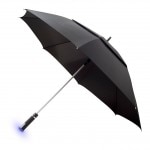The scientist, Boston’s MIT professor and IoT expert, uses the term “enchanted objects” to illustrate his vision of the Internet of Things, and holds that our relationship with these objects will be more natural than with our smartphones.

The inventors of the 21st century don’t spend their lives locked in dark laboratories looking for the philosopher’s stone, but share their inventions and points of view about the future in conferences that draw huge audiences, where they are regarded, whether they want to or not, as gurus. This is the case of David Rose, one of the stars of the Wold Business Forum, which recently took place in Madrid.
The scientist, writer, entrepreneur and professor at the MIT Media Lab shared some of his insights into the future of the Internet of Things – which he developed in more detail in his book Enchanted Objects - during a presentation at the Royal Theater in the Spanish capital city.
How would you define those ‘enchanted objects’ that you write about in your book?

They are ordinary objects with extraordinary capabilities. They are connected and can ‘speak’, communicate; at the same time, they tap into a whole cultural tradition in the Western world, which reveals who we are and what do we want. In the Lord of the Rings, Frodo had a sword that warned him about when things got dangerous. Today, we can have an umbrella that tells us when it’s going to rain. [This ambient umbrella is precisely one of Rose’s most popular inventions].
In Snow White, there was a mirror capable of determining who was the fairest of them all. Neiman Marcus, a fashion store chain from the U.S. already has mirrors that show how their garments fit without requiring customers to try them on.
Are these enchanted objects more useful than wearables?
The difference is where we put the technology: whether on ourselves or on objects. Carrying this technology around allows us to play superheroes, like Ironman. But it is kind of intrusive if we wear it on our faces, it limits our social interaction. That is why Google Glass did not take hold, and I’m happy about that, because this type of wearables are kind of weird and tend to isolate us.
Will these enchanted objects be able to topple the pervasive smartphone?
Smartphones have something I don't quite like: they force us to be looking at a screen, drawing our attention to an object. The same goes for tablets: they demand too much attention, they isolate us from the people we care about. And that can be solved through more functional objects, designed from a more humanistic point of view. We need to keep in mind that, thanks to technology, we don't really need a convergent device capable of doing everything anymore. I believe in the specialization of objects, not in having one device that does everything.
I’m certain that our relation with enchanted objects will be more natural than with mobile devices. Objects are becoming some sort of avatars through which services can be provided, they offer access to new services. And these services have found a new home, the objects. Thanks to the Internet of Things, we have objects that worry about us, not objects we need to worry about.

David Rose
According to Cisco and McKinsey forecasts, by 2025 there will be 50 billion of these connected devices, a modest figure compared to other forecasts, such as consulting firm Gartner’s. But, how can these objects become enchanted objects, something more than an object that is also online?
I speak about the “Ladder of Enchantment” which has five steps: first, the connection itself, the personalization, then socialization and finally the gamification and story-fication.
Let’s take a simple example such as a garbage can: we can connect it to the internet and place a camera on it so that the machine can be aware of what we throw in it. But we can also take things a step further, use the data we collect about what we dispose of, to order something from the supermarket, for example, and turn the whole thing into a game, and also into a story, if we are eating too many cookies or expensive products.
And wouldn’t a house full of “enchanted objects” be too overwhelming for those who live in it? Aren’t we already surrounded by too much information, too many data?
Our homes are already full of things, pictures, decorations. If we design the objects of the future properly, we’ll want hundreds of them in our homes. The history of computing, up until now, has revolved around the concept of efficiency. I believe this is changing, because every day, enchanted object pose the challenge of adding movement, magic, to that technology we use every day. Design is crucial.
According to Cisco and McKinsey forecasts, by 2025 there will be 50 billion of these connected devices
Let me give you an example: in 2001 I invented a globe that conveys information by shifting color. It can be configured online, and informs you about rain, pollen, wind speed… anything you want. You can see it through the corner of your eye, it doesn’t even take you two seconds. This type of objects are overwhelming.
A future where we will be surrounded by internet connected objects using our data raises many security and privacy concerns. Will businesses and governments become some sort of big brother watching us?
I sincerely doubt that governments care about how many steps I take every day, if I take my meds or my home’s average temperature. Regarding businesses, they are going to have a lot of information about us stored. I would like them to destroy it more quickly and more frequently.